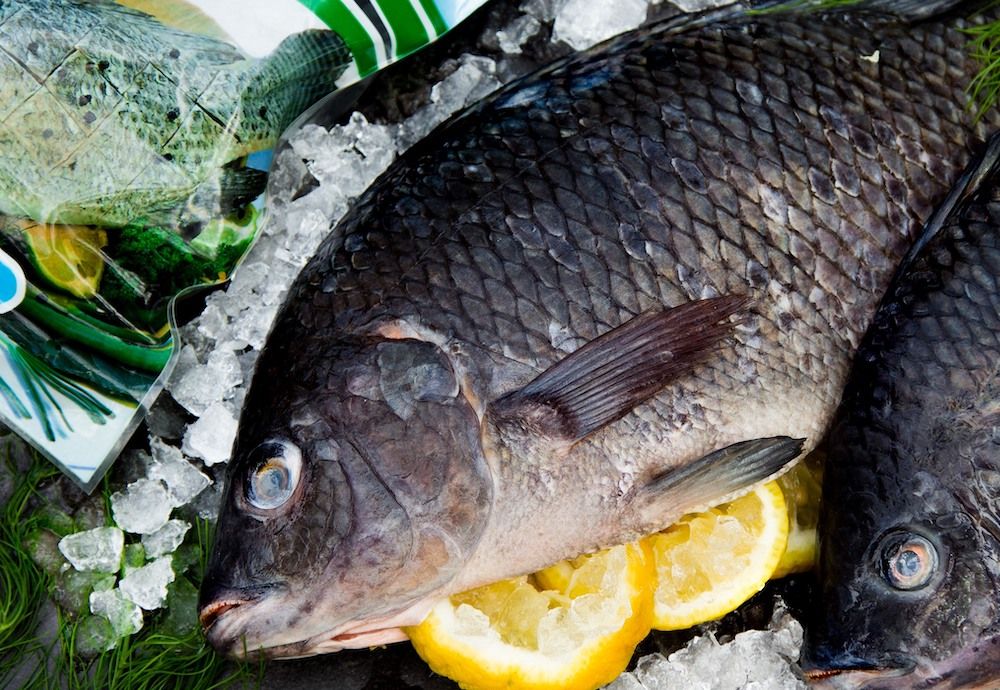Steep consumer demand for fish across Africa has led to rapid depletion of popular freshwater varieties like tilapia.
James de la Fargue, who heads tilapia farming venture Lake Harvest, recognizes that meeting the demand of the continent’s fast-growing population will require smarter, and more widespread, fish farming.
“Wild catch is declining because of overfishing,” he tells AFN, estimating that Africa’s fishermen catch an unsustainable 300,000 metric tons of freshwater fish annually. For enough new supply to come to market, “it will [have to] be from farms,” he adds.
Fargue’s views resonate with research released last year from aquaculture-focused VC firm Aqua-Spark, which found that, “due to overexploitation, wild catch can’t be increased and thus won’t be able to meet the additional demand” in Africa.
Aqua-Spark backed Lake Harvest’s recent $7 million funding round to spur sustainable tilapia production across Eastern and Southern Africa. In a statement, the Netherlands-based firm said that it invested in the 25 year-old company because of its “well-established brand” and “strong footholds” in several countries throughout the regions.
The deal is Aqua-Spark’s first in Africa. It invested alongside Norfund, Norway’s development finance institution.
Enabling African fish farming
Since it was founded in 2015, Aqua-Spark has backed 24 companies and grown to €275 million ($311 million) in assets under management.
Last year, it launched its $50 million Africa Fund, signaling untapped opportunity in the continent’s aquaculture market – and tilapia in particular.
“Substantial investment is required in tilapia farming to both realize its potential and, at the same time, ensure it plays a role in meeting the foreseen surge in demand for protein in sub-Saharan Africa,” the team wrote at the time of the fund’s unveiling.
Equity investment in Africa’s homegrown fish farming ventures is needed to curb the continent’s dependence on Chinese imports from China; African markets account for 65% of China’s whole tilapia exports, according to Aqua-Spark. Moreover, the 10 million metric tons of fish consumed annually in Africa is projected to triple by 2050.
Aqua-Spark is looking to raise $300 million over the next six to eight years – enough to cover the investment needs of the top 25 companies in its pipeline.
Technology’s critical role
Lake Harvest is among the African continent’s veterans in sustainable farmed-fish production. When it started in Zimbabwe in 1997, its management made a conscious decision to focus on tilapia because of the species’ origin in Lake Kariba on the country’s border with Zambia.
“We did not want to bring foreign species,” de la Fargue explains.
The company’s early production targeted European export markets. It shipped out 10,000 metric tons of fish during its first decade of operations.
Exporting to Europe eventually became untenable because of stringent standards and regulations, as well rising freight costs.
“We decided to channel our energies towards products for the regional markets,” says de la Fargue, who joined Lake Harvest in 2016. The company expanded operations to Zambia and Uganda and built distribution channels to South Africa, Malawi, Botswana, and Kenya.
Its business model and facilities enable it to supply fresh and frozen fish, as well as other fish products, to retail and wholesale customers throughout the year.
Lake Harvest has invested in high-tech fish farms that simplify monitoring and management of growing conditions like water oxygen levels and temperature, feeding schedules, and fish growth and mortality rates. Its cold-chain logistics allow it to store supplies for up to six months. This ensures that the company mitigates vulnerability to market fluctuations.
Today, Lake Harvest produces 6,000 metric tons annually. It also has a vibrant hatcheries program and contracts with out-growers, to whom it provides fingerlings, feed, technological support, and offtake agreements through its distribution arm.
De la Fargue says technology has been a critical enabler in Lake Harvest’s growth.
With the Aqua-Spark and Norfund investment, the company intends to significantly expand its contractual fish-farming business, which will help it boost production volumes to 10,000 metric tons per year over the next two years.
“We also intend to use the funds to develop biomass, [for] development of the hatcheries business, and improvement of our products,” says de la Fargue.
Lake Harvest also plans to invest in improved genetics for its fish supply and breeding programs. De la Fargue says this will be crucial for future growth as the company runs an antibiotics-free operation.
Aqua-Spark calls better genetics “an essential piece of the tilapia puzzle for producers” across Africa generally.
“Acquiring broodstock from advanced breeding programs abroad or investing in a vertically integrated breeding program would be a logical next step” after improved infrastructure and management of hatcheries and farms, “and could significantly contribute to a farm’s productivity and profitability,” the VC said in an industry report it published recently.




